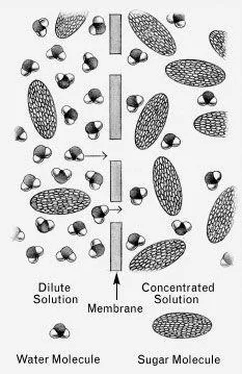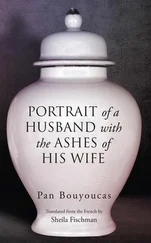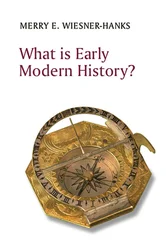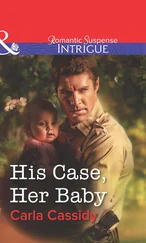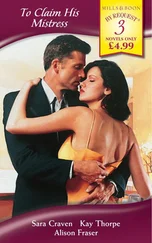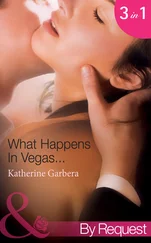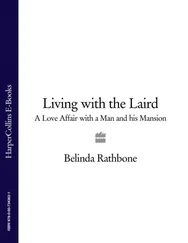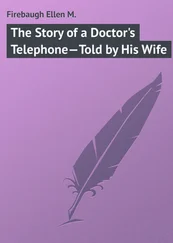Marlene Parrish - What Einstein Told His Cook 2
Здесь есть возможность читать онлайн «Marlene Parrish - What Einstein Told His Cook 2» весь текст электронной книги совершенно бесплатно (целиком полную версию без сокращений). В некоторых случаях можно слушать аудио, скачать через торрент в формате fb2 и присутствует краткое содержание. Год выпуска: 0101, Издательство: W. W. Norton & Company, Жанр: Кулинария, на английском языке. Описание произведения, (предисловие) а так же отзывы посетителей доступны на портале библиотеки ЛибКат.
- Название:What Einstein Told His Cook 2
- Автор:
- Издательство:W. W. Norton & Company
- Жанр:
- Год:0101
- ISBN:нет данных
- Рейтинг книги:4 / 5. Голосов: 1
-
Избранное:Добавить в избранное
- Отзывы:
-
Ваша оценка:
- 80
- 1
- 2
- 3
- 4
- 5
What Einstein Told His Cook 2: краткое содержание, описание и аннотация
Предлагаем к чтению аннотацию, описание, краткое содержание или предисловие (зависит от того, что написал сам автор книги «What Einstein Told His Cook 2»). Если вы не нашли необходимую информацию о книге — напишите в комментариях, мы постараемся отыскать её.
What Einstein Told His Cook 2 — читать онлайн бесплатно полную книгу (весь текст) целиком
Ниже представлен текст книги, разбитый по страницам. Система сохранения места последней прочитанной страницы, позволяет с удобством читать онлайн бесплатно книгу «What Einstein Told His Cook 2», без необходимости каждый раз заново искать на чём Вы остановились. Поставьте закладку, и сможете в любой момент перейти на страницу, на которой закончили чтение.
Интервал:
Закладка:
You’ve heard people talk about a “litmus test,” to show whether a politician is on one side of an issue or the other? Well, litmus is a dye obtained from lichens; it is pink when in an acidic environment and blue when in an alkaline environment. Unlike politicians, litmus gives a straight yes or no answer: either acidic or not acidic (alkaline).
Litmus is what chemists call an acid-base indicator . Some of the tannins in tea are also acid-base indicators; they are one color in an acidic environment and another color in an alkaline environment. Your acidic lemon juice turns some of the tea’s tannins yellow, and Granny’s alkaline baking soda turns them reddish-brown.
Another example of an acid-base indicator is the pigment in red cabbage, one of the class of colored food chemicals called anthocyanins. Anthocyanins are responsible for the colors of many flowers and fruits, including apples, plums, and grapes.
The color of cabbage’s main anthocyanin changes with the acidity or alkalinity of its surroundings. It ranges from red in a strongly acidic environment to purple in a neutral (neither acidic nor alkaline) environment and goes from blue to greenish-yellow in increasingly alkaline environments. Cabbage looks more appetizing when toward the reddish end of the spectrum, so it is often cooked with (acidic) apples, whose sweetness can be balanced by a little red-enhancing vinegar added before serving.
Sidebar Science: A litmus quest
WHAT MAKESacid-base indicators change color?
Tannic acid, as one example, is what chemists call a weak acid, meaning that it is, well, not a strong acid. (See how easy chemistry is?) A weak acid’s molecules consist of two parts, a hydrogen ion (a positively charged hydrogen atom) and an anion (AN-eye-on), a negatively charged atom or group of atoms. We’ll call the hydrogen ion H and the anion A; when they’re together in the whole acid molecule, we’ll call it HA.
It’s the A part of the tannic acid molecule that is colored. When Grandma adds her alkaline baking soda, it gobbles up some of the acid’s H’s, leaving an excess of free A’s and therefore a darker color. On the other hand, when you add your acidic lemon juice, it contributes lots of H’s of its own, which combine with many of the A’s, in effect tying them up and curtailing their effects. Hence, the color becomes weaker; the brown turns to yellow.
Tannins have historically been used as dyes, as I learned early in life from my grandfather, a Russian immigrant. He had a magnificent white beard, but his mustache was permanently stained yellow from his habit of drinking tea from a glass.
NO CAF-FIEND
I’m a tea drinker, but I’m trying to cut down on caffeine. What if I used smaller cups? That is, what if I put one tea bag in a small cup and another tea bag in a large cup, filled them both with boiling water, and let them steep for five minutes? Would the smaller cup contain less caffeine?
Interesting thought, but no cigar.
Caffeine is very soluble in water; as much as 150 grams of caffeine could dissolve in a cup of boiling-hot water. But there isn’t anywhere near that much caffeine in a tea bag. Typically, it’s less than a thousandth of that.
What caffeine there is is extracted out of the tea bag almost completely in the first minute or so of steeping. So either way, big cup or small cup, all the bag’s caffeine is in your tea. You might as well use the big cup and have a longer-lasting drink at no increase in caffeine.
TEA (AND COFFEE) FOR TWO
I drink tea and my boyfriend drinks coffee. As soon as the kettle begins to whistle, he wants to take it off the burner and pour the water into his filter. I want to leave the kettle on longer, because I think water for tea should be hotter. But he says it will never get any hotter, no matter how long we leave it on. Who’s right?
You’re right about the tea and he’s both right and wrong about the water. I think we can work it out without your having to resort to separate kettles.
Most connoisseurs agree with you that in order to extract the proper amount of flavor from black or oolong tea leaves, the water must be as hot as possible. But no matter how much you heat it, water will never get hotter than boiling: 212°F (100°C), minus a degree or two, depending on the altitude and weather. That’s because water boils—turns to steam—when its molecules acquire just enough energy to overcome the atmosphere’s pressure on the water’s surface and break away into the air. If a molecule happens to acquire more than that amount of energy, it takes its excess energy along with it as it flies out. That extra energy is therefore lost from the water in the kettle and isn’t available to raise its temperature. So your boyfriend scores a point on that one.
But whistling tea kettles can be deceptive. When your kettle emits its first weak peeps, only a few of the more robust bubbles will have succeeded in making it all the way to the surface to release their steam and make the whistle whistle. The water is not yet fully boiling. For your black or oolong tea, then, you have to keep heating until all the water is bubbling furiously, the whistle has been screaming at maximum pitch and volume for at least several seconds, and your kitchen is beginning to fill up with stray dogs.
Green tea, however, follows different rules. Experts say that it should be brewed at a lower temperature of about 165 to 180°F (74 to 82°C), presumably because higher temperatures could promote oxidation of its valuable polyphenols (see chapter 1).
Coffee is an entirely different cup of tea, so to speak. Water that is boiling vigorously isn’t desirable for making coffee because its steam would carry off too many of the volatile, aromatic flavor components, of which coffee has many more than tea. (Nobody has ever said, “Wake up and smell the tea.”) That’s why the crudest and most forthright method of making coffee—boiling the grounds in a pot of water—makes a brew better suited to the inside of an automobile battery than a breakfast cup.
The best ways to make coffee, in my opinion, are the filter method, in which hot water is poured over freshly ground beans in a filter-paper cone and drips through by gravity, and the French press or piston-and-cylinder method, in which hot water is poured over the grounds in the bottom of a tall vessel and allowed to steep for about three minutes, after which a perforated plunger is pushed down to press the “mud” to the bottom.
Whatever the method, water that isn’t hot enough won’t extract enough of the hundreds of chemical constituents that have been identified in coffee, all of which are sensitive to heat, air, and interactions with one another. Which ones and how much of each wind up in your cup depend on such things as the type of coffee, the relative amounts of coffee and water, the particle size of the grind, the mixing action in the brewing apparatus, the temperature of the water, and how long it is left in contact with the grounds. All in all, though, the optimum temperature for coffee water is around 190 to 200°F (88 to 93° C), or “just off the boil.”
To settle your domestic dispute, then, I recommend that you get the water to a full, roaring boil, turn off the heat, and quickly pour some onto your tea leaves or bags in a preheated pot. Then count to ten, during which time the water will cool just enough, and hand the kettle to your boyfriend, who may then proceed with his coffee-making.
Could Solomon have done better?
YOU WANT CREAM IN THAT?
I like my coffee with cream, but I also like it to be as hot as possible when I drink it. I know that the cream will cool it off, but when should I add it?
Читать дальшеИнтервал:
Закладка:
Похожие книги на «What Einstein Told His Cook 2»
Представляем Вашему вниманию похожие книги на «What Einstein Told His Cook 2» списком для выбора. Мы отобрали схожую по названию и смыслу литературу в надежде предоставить читателям больше вариантов отыскать новые, интересные, ещё непрочитанные произведения.
Обсуждение, отзывы о книге «What Einstein Told His Cook 2» и просто собственные мнения читателей. Оставьте ваши комментарии, напишите, что Вы думаете о произведении, его смысле или главных героях. Укажите что конкретно понравилось, а что нет, и почему Вы так считаете.
